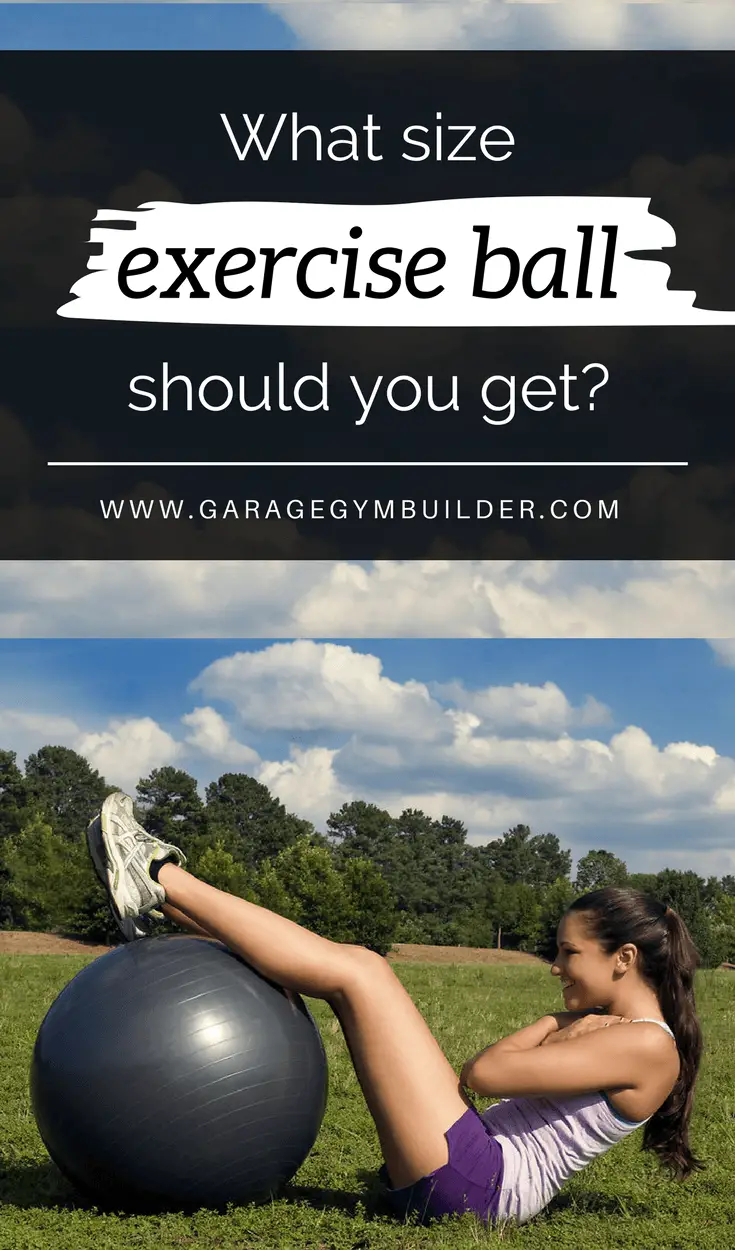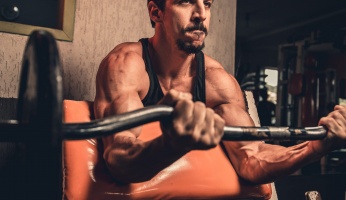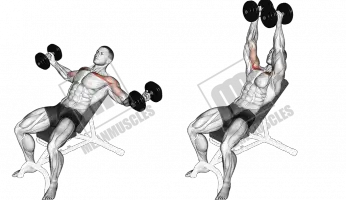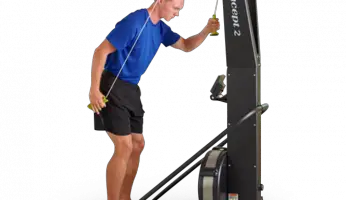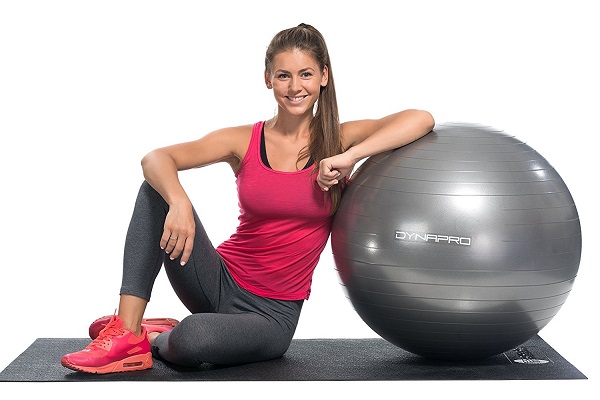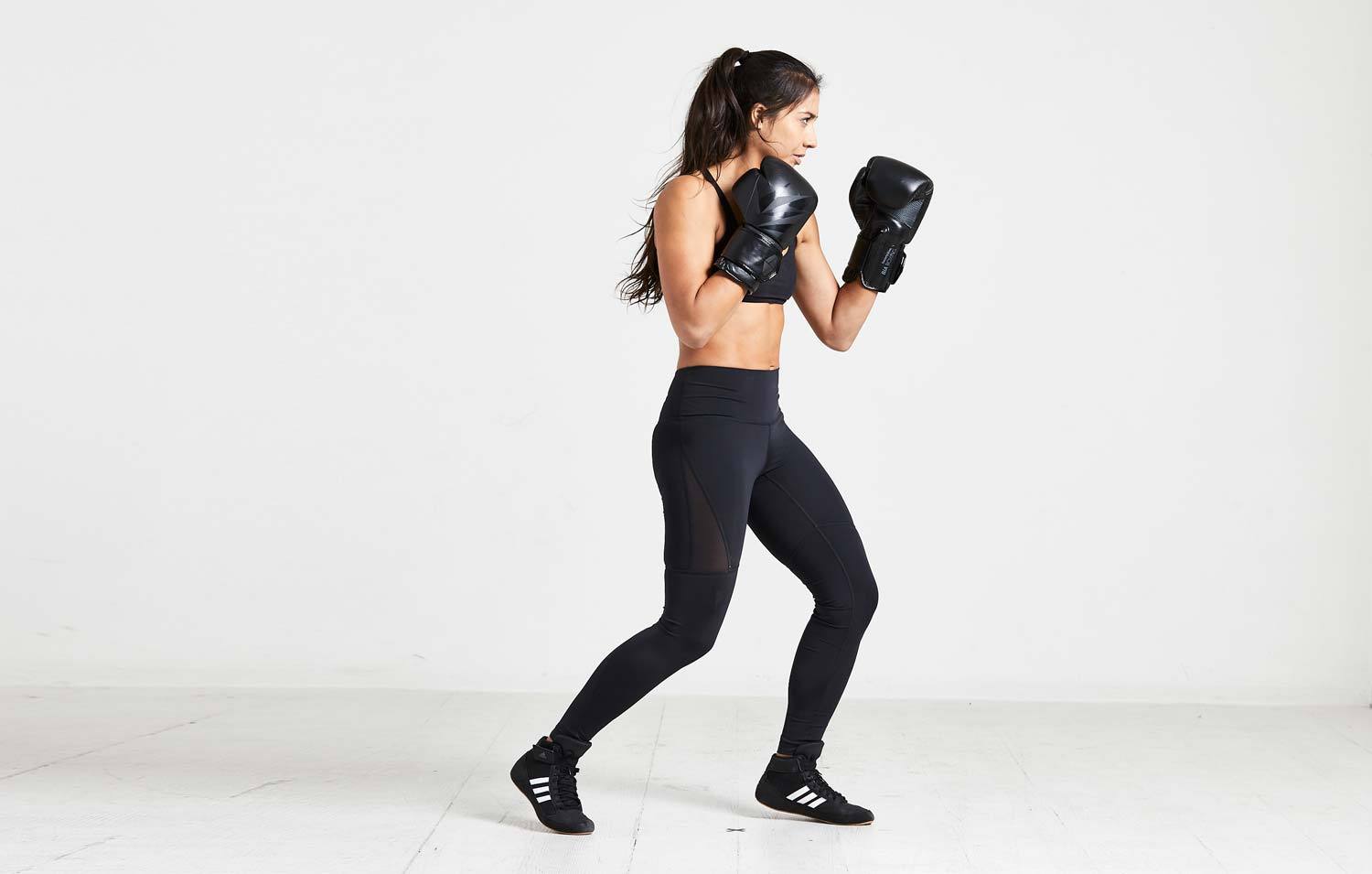What Size Exercise Ball Should You Get – Garage Gym Builder
updated January 1, 2019
An exercise ball is one of the best single pieces of exercise equipment you can buy for your home gym. In terms of cost, strength training, stretching, balance, and core-focused training, it can’t be beaten. Unless you get the proper fitness ball size, however, much of your balance ball benefits will be lost. In this article, we show you how to choose stability ball sizes to suit your needs.
Fitness Ball Basics
Fitness balls are made by several manufacturers around the world, with the quality varying markedly. Most exercise balls are made of some soft elastic and contain air inside of them. Balls sizes range from a 35 cm small exercise ball to a 75 cm stability ball. Whereas medicine balls contain all sorts of filler material, this is not the case with fitness balls.
The significant difference in ball type comes down to the size of the ball. The size of the ball you require depends on your height. If you don’t get the right size for your body, you will not receive the maximum benefit from your fitness ball training regime.
The Right Size Ball For You
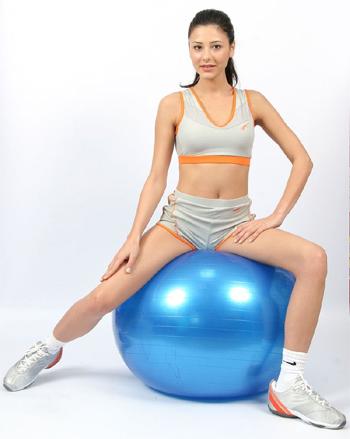
One way to determine the correct sized ball for you is to sit on a properly inflated ball. If your hips end up below your knees, then you know that the ball is not the right size. The ideal balance ball size for you will have your knees in line with your hips.
For this method to be accurate, of course, the exercise ball needs to inflate correctly. While the level of inflation depends upon the exercises, you plan to be doing on the ball, and most balls should be medium firm. It means that you shouldn’t be able to push your hands down more than an inch into the top of the ball.
The sitting test to determine ball size supposes that you will have an opportunity to test out the ball before you buy it physically. However, with so many people buying online these days, that is often not the case. In that case, it is handy to have an exercise ball size chart to help you to choose the proper diameter ball for you.
Exercise Ball Size Chart
Follow these height/diameter guidelines to ensure that you get the right fit:
- If you’re 5’ tall, you need a 45cm diameter ball
- If you’re 5’ 1” – 5’4” tall, you need a 55cm diameter ball
- If you’re 5’ 5” – 5’ 11” tall, you need a 65cm diameter ball
- If you’re 6’ or taller, you need a 75cm exercise ball
- If you’re 6’ 3” – 6’ 6” tall, you need an 80cm exercise ball
There are larger balls that are available for people who are taller than 6’6”. These are 85cm, 95cm, 105cm or 120cm balls. These larger balls also tend to be used for specific sports training by basketball and football players.
Core Muscle Ball Exercise Sizing
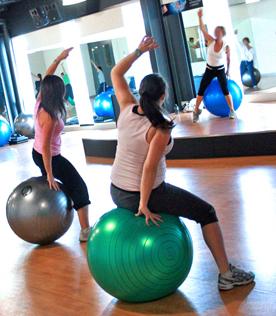
To effectively work the muscles of your core, it’s essential that you use the correctly sized ball. A ball that is too large or small will put too much pressure on your lower back. The height diameter chart may not apply here, especially if you are overweight or have longer than healthy limbs. To determine the best-sized ball for your core moves, you need to be able to sit on the ball.
Sit side on the ball and position yourself side-on to a mirror, so you can see what is going on with your posture. Plant your feet firmly on the ground. It provides the right balance, allowing you to support yourself safely. Make sure that you are sitting on top of the ball.
For core exercises, you want your hips to be slightly higher than your knees. It allows you to maintain the natural inward curve of your lower back while you are exercising on the ball. If your hips are any further down, you will be slumped down, and you won’t be able to activate your core muscles nearly as well. You’ll also potentially strain your lower back.
When you’re doing core work, you want to make sure that there is not a lot of compressions when you press on the ball. Anti-burst balls are firmer than the cheaper, softer balls.
Are you looking for a Swiss ball specifically for physio and balance training? Find out the brands will give you the best performance with our Best Stability / Physio / Balance / Swiss Ball Review 2019.

What Size Exercise Ball?
Fitness balls are generally safe, although it does take some time to get used to the imbalance that is at their core. A primary cause of injury is to operate with either an over or an under the inflated ball. Of course, being a ball, it is possible that you will fall off.
You should not jump straight into the heavyweight training that you have been doing on a flat bench if transferring exercises such as the Dumbbell Bench Press and Bulgarian Split Squat to an exercise ball.
You will notice that some exercise balls are promoted as being ‘anti-burst’. It doesn’t mean that they are indestructible. Anti-burst means that if it does fail, perhaps by being pierced by the corner of your desk, it will deflate gradually rather than popping like a balloon. Gym balls always come with special warranty restrictions because, while they can withstand massive forces, they can sustain invisible damage if kicked or misused.
Only use an exercise ball outside if you have it on a mat and the area is free of any sharp or rough surfaces.
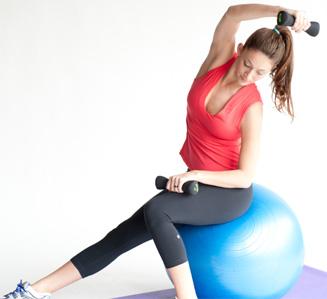
An under or over-inflated ball will not perform correctly. If a ball is too soft, you will sink into the surface and if a ball is over-inflated it will cause the user to balance on top of it, rather than allowing the ball to mold to the user’s body shape.
The ball should be inflated to about 80 percent of its total inflation. Then leave it for 24 hours to allow the material to settle, before finishing the inflation process. Rather than trying to measure air pressure inside the ball, measure the diameter; place the ball right up against a wall, hold a straight edge against the point on the ball that is furthest from the wall, then measure the distance along the floor from the wall to this point.
Now that you know what size ball is right for your needs to find out where to buy the best exercise ball for your home gym.
Conclusion
Choosing the best exercise ball is only half the purchasing decision. You also need to get the right sized ball for your needs. Exercise ball size chart should be followed for a general guide. If you’re able to test out the ball before buying, perform the two sit tests. Remember – for general use your hips should be at knee height, whereas for core work, the hips need to be slightly higher.
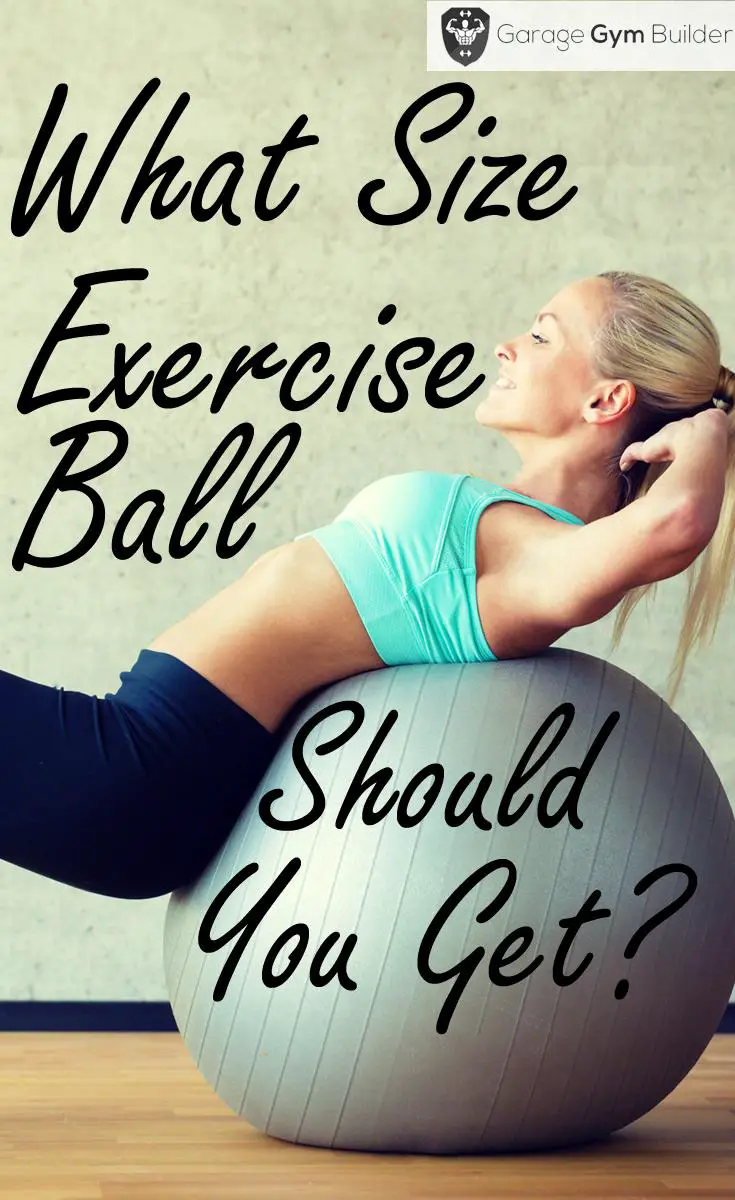
Save this to Pinterest:
